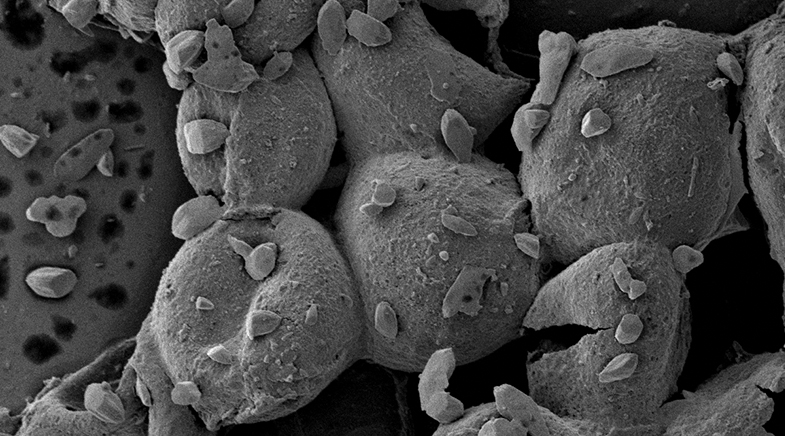Tackling e-waste
-
- from Shaastra :: vol 03 issue 07 :: Aug 2024

A team has produced metal-free PAHs, which are used in organic semiconductors that are crucial for designing electronic chips.
Scientists have long been searching for metal-free organic semiconductors to solve the problem of electronic waste (e-waste). Two researchers from the Indian Institute of Science Education and Research (IISER) Kolkata may have an answer to the problem. Kalipada Koner and Rahul Banerjee recently discovered a way of producing an organic compound called polycyclic aromatic hydrocarbons (PAHs) without using metals (bit.ly/PAH-os).
PAHs are used for making organic semiconductors, which are crucial for designing electronic chips. Semiconductors typically include materials such as silicon, germanium, gallium, and arsenide, all of which may harm the environment. But the current production methods for PAHs often involve the use of metals, which may also have a toxic effect. The basic structure of PAHs consists of two or more carbon rings, such as graphene. As the carbons are closely attached, PAHs are good conductors of current. Additionally, PAHs are soluble, an attribute that helps in synthesising the desired compound.
The IISER team says that its method of producing metal-free PAHs is simple. "We used three basic reactions… that we studied in the 12th standard," says Koner, referring to imine condensation, nucleophilic aromatic substitution and intramolecular Friedel–Crafts reactions. They added nitrogen to PAHs, which improved the material's ability to absorb, emit, and transmit electromagnetic signals. This also enhanced the material's electrochemical properties.
Using this method, the researchers could synthesise PAHs within a few hours. It created 30 different semiconductors and formed them into a crystal. This compound could be used as organic semiconductors in organic field-effect transistors, organic light-emitting diodes, liquid crystals, and chemical sensors. With the same methodology, the researchers incorporated oxygen, nitrogen, boron, fluorine, and sulphur into the carbon rings of PAHs.
They added nitrogen to PAHs, which improved the material's ability to absorb, emit, and transmit electromagnetic signals. This also enhanced the material's electrochemical properties.
Koner, now a postdoctoral researcher at the California Institute of Technology, took up the problem of PAH synthesis as a temporary project after submitting his research thesis to Banerjee, who was his guide. The two went on to produce a solution that opened up a new avenue to sustainability.
Electronic gadgets require metals such as lithium and indium for circuit boards, and there is no significant industry for recycling e-waste. The metals from e-waste mix with soil and make it toxic. Further, metals used for chips will not last forever. "We are worried that very soon we will be exhausting metal sources," says Banerjee.
Banerjee says their method is environmentally friendly. The researchers are still exploring the properties of the material they have produced.
"I believe that this work will be a game-changer in the synthesis of polyaromatic and porous materials, which conventionally demand the need for expensive transition metals," says Pramod Pillai, Associate Professor of Chemistry at IISER Pune.
Have a
story idea?
Tell us.
Do you have a recent research paper or an idea for a science/technology-themed article that you'd like to tell us about?
GET IN TOUCH














